Here’s the lowdown on how the coronation regalia symbolise divine authority
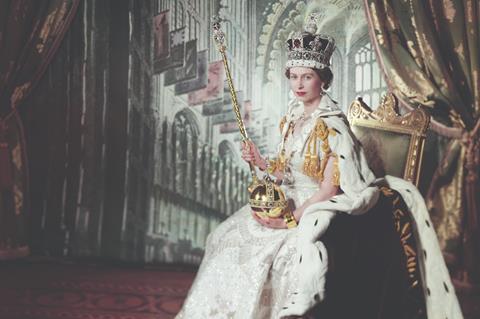
St Edward’s Crown
This weighty crown is only ever used during the monarch’s coronation, and when it is placed on the head of King Charles III by the Archbishop of Canterbury at the climax of the ceremony, it will denote his royal authority.
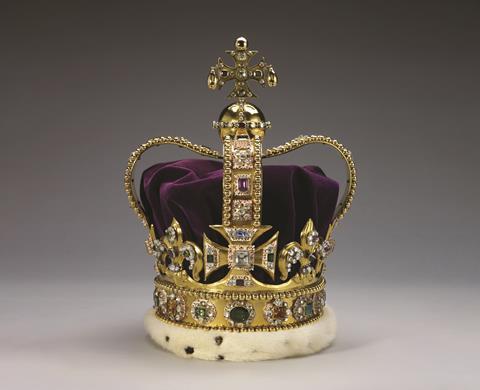
It is certainly a spectacular crown, having first been made for Charles II in 1661 when the monarchy was restored following the interregnum of the republican years of Oliver Cromwell, who had the previous crown jewels melted down. What makes it so impressive is the solid gold with which it is made, as well as the semi-precious stones with which it is set. The 2.2kg weight makes it difficult to wear and also explains why the monarch does not kneel during the crowning – there is a real risk that the person might struggle to get up or even break their neck!
While to most people, the key message of St Edward’s Crown is that the monarch has authority, it conveys a much more important theme of the whole coronation – the relationship of the sovereign to God, and that it is God who has dominion over the world. This is also signified by the cross which is the apex of the crown, and this sits atop the ‘monde’ – or orb – which represents the world, also below God.
It is after the crowning that peers traditionally pay homage to the new sovereign; in 1953, Elizabeth II’s husband, Prince Philip, the Duke of Edinburgh, was the first to do so. Again, while this might suggest that the monarch is above all others, St Edward’s Crown is a reminder that everyone, including the newly crowned monarch, is there to serve God – the God who gave his only Son to redeem the world.
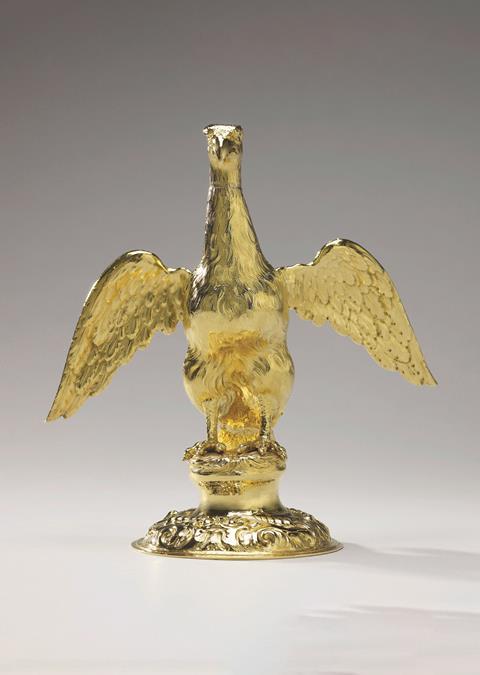
Ampulla
In ancient Rome, an ampulla was a glass vessel with two handles used for sacred purposes. The same term is used for the gold container used during the coronation to hold the oil with which the sovereign is anointed. After making his oaths to govern, protect the Church of England and be just and merciful, and before being crowned, King Charles will be anointed – a form of blessing that can be traced back to Anglo-Saxon kings of England and to anointings of kings in the Old Testament, especially King Solomon. It denotes the belief that God, asked to sustain the monarch, will bless and keep them.
Anointing is used in Christianity for baptism, confirmation and ordination, and links the role of monarch to that of a priest – serving God, pointing towards the Lord, committed for life. Like much of the coronation regalia, this gold ampulla, made in the shape of an eagle, was made for Charles II in 1661. It replaced an earlier eagle, destroyed during the English Civil War, which was said to contain oil given to Thomas Becket by the virgin Mary and used at several coronations from the 1300s onwards. The head is removed, allowing the oil to fill the container and, during the coronation ceremony, it is poured out via the eagle’s beak. The eagle is frequently seen as a symbol of strength in scripture: “Those who hope in the Lord will renew their strength. They will soar on wings like eagles” (Isaiah 40:31).
The anointing oil for King Charles’ coronation was made in Jerusalem earlier this spring, using oil pressed from olives growing on the Mount of Olives, where the king’s paternal grandmother, Princess Alice of Greece, is buried. It is perfumed with sesame, rose, jasmine, cinnamon, neroli, benzoin, amber and orange blossom. The combination of fragrance and richness from the oil is seen as symbolising the gifts of the Holy Spirit combined with Christian virtue.
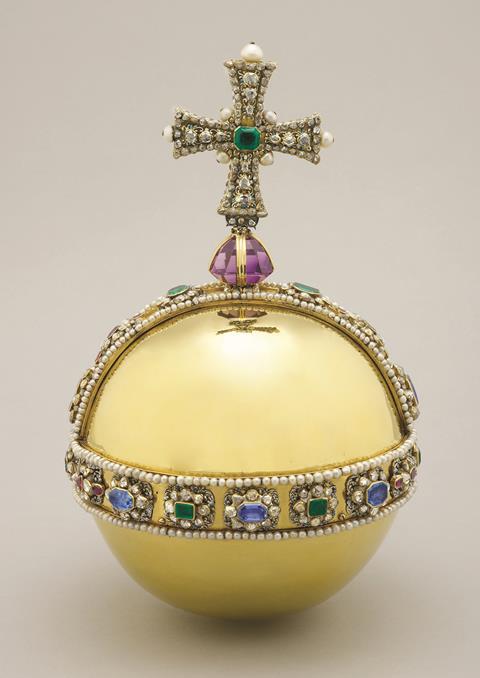
The orb
After the most sacred moment of the coronation ceremony – the anointing of the monarch – he or she is prepared for the next part of the service – the crowning. If King Charles’ coronation follows that of his mother’s, he will be given a variety of items to wear and hold. Among them will be the orb.
An orb has been used since the Roman Empire to denote power over the globe. But in the British coronation, the orb offers another message. This gold sphere, decorated with 365 diamonds, nine sapphires, 18 rubies and 368 pearls has, placed above a fabulous amethyst, a cross. If the coronation of Charles III mirrors his mother’s in 1953, the orb will be brought from the altar, where it was placed at the start of the coronation service by the Dean of Westminster, and handed over to the Archbishop of Canterbury. Most Rev Justin Welby will then say: “Receive this orb set under the cross, and remember that the whole world is subject to the power and empire of Christ our redeemer.”
Like St Edward’s Crown, the orb was made for the coronation of Charles II and every monarch has used it since. Its message is constant: a king or queen may have majesty, but their majesty is as nothing compared to that of Jesus of Nazareth, a king nailed to a cross, and they are called to serve him.
The orb is special to the coronation and is only ever in the presence of the sovereign on one other occasion – at the time of their death. In September 2022, the orb was placed on the coffin of Elizabeth II during her lying in state at Westminster Hall, and remained upon it during her funeral at Westminster Abbey and committal at St George’s Chapel, Windsor. It was placed on the altar at St George’s before her burial, just as it had been during the coronation, before she was given the sceptre and rod. At the end of the coronation, the monarch carries it once more in procession, with the sceptre.
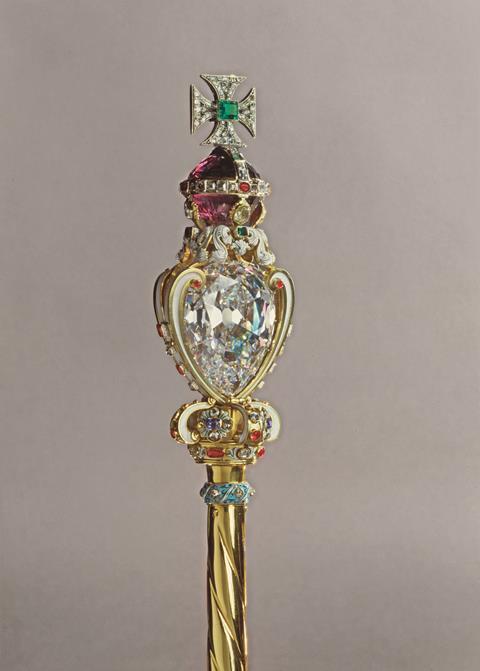
The sceptre
The final items to be delivered to the monarch before the crowning are the rod and the sceptre. After the orb has been placed in the monarch’s right hand, he or she returns it to the Dean of Westminster to be replaced on the altar. While the rod with the dove – denoting mercy – is placed in the left hand, the sceptre with the cross is placed in the right.
A sceptre has long been associated with rulers and is held as a symbol of sovereignty. It can be found in scripture, meaning a rod, staff or shepherd’s crook, which are for protection – most famously in Psalm 23: “your rod and your staff they comfort me”. It is used elsewhere to denote sovereignty: “The Lord has broken the rod of the wicked, the sceptre of the rulers” (Isaiah 14:5). It is also linked to the kingship of God: “Your throne, O God, will last for ever and ever; a sceptre of justice will be the sceptre of your kingdom” (Psalm 45:6).
Anointing links the role of monarch to that of a priest – serving God, committed for life
In 1953, the sceptre was handed to Elizabeth II by the Archbishop of Canterbury, saying “Receive the Royal Sceptre, the ensign of kingly power and justice.”
The sceptre is one of the most expensive items in the coronation regalia, costing more than anything else, apart from the crowns. It became even more priceless when George V had it transformed for his 1910 coronation, replacing the original monde with the 530.2 carat Cullinan diamond. Estimates on the worth of the crown jewels vary between £3-5bn. As with St Edward’s Crown and the orb, this symbol of the world is topped with a cross, denoting everything is under the dominion of Christ.
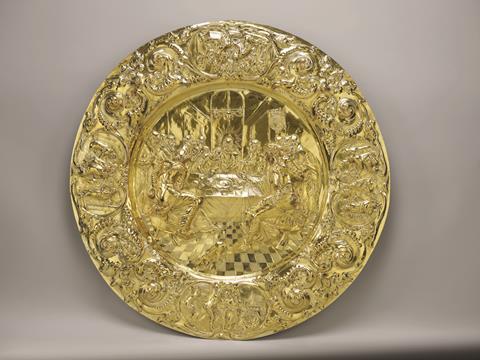
Last Supper altar dish
The huge altar dish forms the centrepiece on the High Altar at Westminster Abbey during the coronation. Made for James, Duke of York, during the reign of his brother, Charles II, it is nearly a metre across and weighs almost 13kg. The dish is engraved with the Stuart coat of arms – the royal house that ended with Queen Anne and was replaced with the House of Hanover, which in turn led to the Saxe-Coburgs and the House of Windsor, of which King Charles is the fifth monarch.
The main scene on the altar dish shows Jesus at the Last Supper, with John the evangelist leaning on his shoulder and the hooded figure of his betrayer, Judas, in the foreground.
The coronation is, at its heart, a Eucharist service – hence the importance of this dish, which shows Jesus instituting it during his last meal with the apostles. The four cartouches around the border show the encounter with Jesus on the road to Emmaus, the commissioning of the apostles, the coming of the Holy Spirit and the washing of the apostles’ feet – which the monarch commemorates each year with a special Maundy Thursday service.
Holy Communion has always been an important part of the coronation ceremony. After the oath-taking, anointing, crowning and homage paid to the new monarch, it is traditional that he or she removes their crown and offers bread and wine to the Archbishop of Canterbury. The monarch then receives communion after the prayers of consecration have been said over the bread and wine. As always during the Eucharist service, the officiating priest (who is the Archbishop of Canterbury at the coronation) says the words Jesus said at the moment illustrated on the Last Supper altar dish: “This is my body, given for you; do this in remembrance of me” (Luke 22:19).













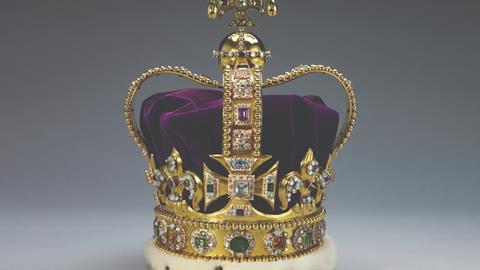

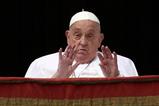
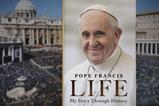





















No comments yet